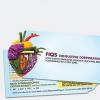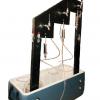Hello we are a flexible film packaging supplier and we are debating whether or not to test for EB=Enterobacteriaceae or to do regular ATP testing. We are low risk for any pathogens/bacteria according to our hazard analysis but since this is required by SQF standards we must swab and perform/have an environmental testing schedule. I want to scan only for ATP because these results will let us know if there is any living organism present on the surface scanned, this would to include EB because its living, however we will not know exactly what is present on the surface through ATP testing, we will only know that the results show something living is present. A consultant we talked to suggested that we at minimum test for EB as it is an umbrella for many bacterial gut germs found on dirty hands/lack of hygiene so we were going to go through with that but now we find that ATP testing is perhaps most reasonable seeing as how we are low risk anyways and if we find anything living we will send it to a lab and find out what it is then, but EB testing right of the bat seems excessive. Please let me know if other packaging manufacturers only do ATP as well and if this is suitable for the SQF standards for environmental testing for packaging.
- Home
- Sponsors
- Forums
- Members ˅
- Resources ˅
- Files
- FAQ ˅
- Jobs
-
Webinars ˅
- Upcoming Food Safety Fridays
- Upcoming Hot Topics from Sponsors
- Recorded Food Safety Fridays
- Recorded Food Safety Essentials
- Recorded Hot Topics from Sponsors
- Food Safety Live 2013
- Food Safety Live 2014
- Food Safety Live 2015
- Food Safety Live 2016
- Food Safety Live 2017
- Food Safety Live 2018
- Food Safety Live 2019
- Food Safety Live 2020
- Food Safety Live 2021
- Training ˅
- Links
- Store ˅
- More

















